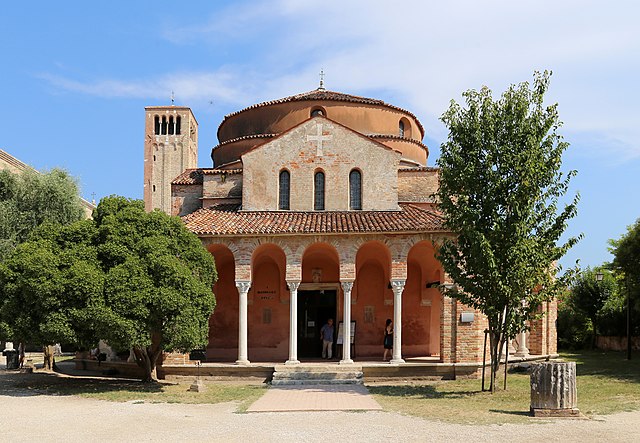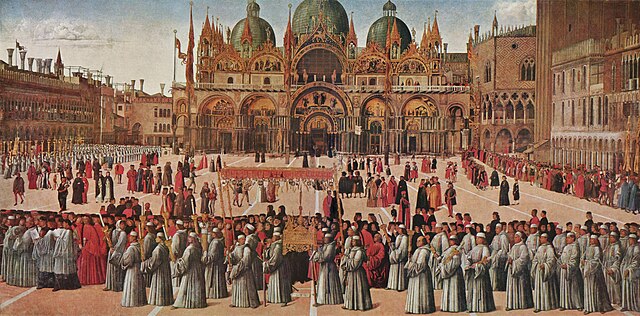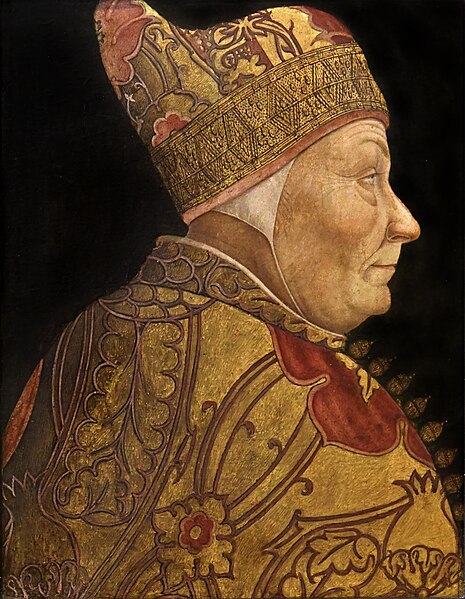The Republic of Venice or Venetian Republic, traditionally known as La Serenissima, was a sovereign state and maritime republic in parts of the present-day Italian Republic, Istria and Dalmatia that existed for 1,100 years from 697 until 1797. Centered on the lagoon communities of the prosperous city of Venice, it incorporated numerous overseas possessions in modern Croatia, Slovenia, Montenegro, Greece, Albania and Cyprus. The republic grew into a trading power during the Middle Ages and strengthened this position during the Renaissance. Most citizens spoke the Venetian language, although publishing in Italian became the norm during the Renaissance.
The Church of Santa Maria Assunta, on the island of Torcello, was the main place of worship in the Venetian Lagoon between the 7th and 9th centuries.
The church of Santa Fosca, built in the 12th century, is an example of Byzantine influence in Venetian culture.
Painting by Gentile Bellini depicting St Mark's Square in the 1490s
Francesco Foscari was the 65th Doge of the Republic of Venice from 1423 to 1457
Venetian, wider Venetian or Venetan is a Romance language spoken natively in the northeast of Italy, mostly in Veneto, where most of the five million inhabitants can understand it. It is sometimes spoken and often well understood outside Veneto: in Trentino, Friuli, the Julian March, Istria, and some towns of Slovenia, Dalmatia (Croatia) and Bay of Kotor (Montenegro) by a surviving autochthonous Venetian population, and in Argentina, Australia, Brazil, Canada, Mexico, the United States and the United Kingdom by Venetians in the diaspora.
A sign in Venetian reading "Here Venetian is also spoken"
A street sign (nizioléto) in Venice using Venetian calle, as opposed to the Italian via
Lasa pur dir (Let them speak), an inscription on the Venetian House in Piran, southwestern Slovenia
Venetian sign in ticket office, Santa Lucia di Piave








